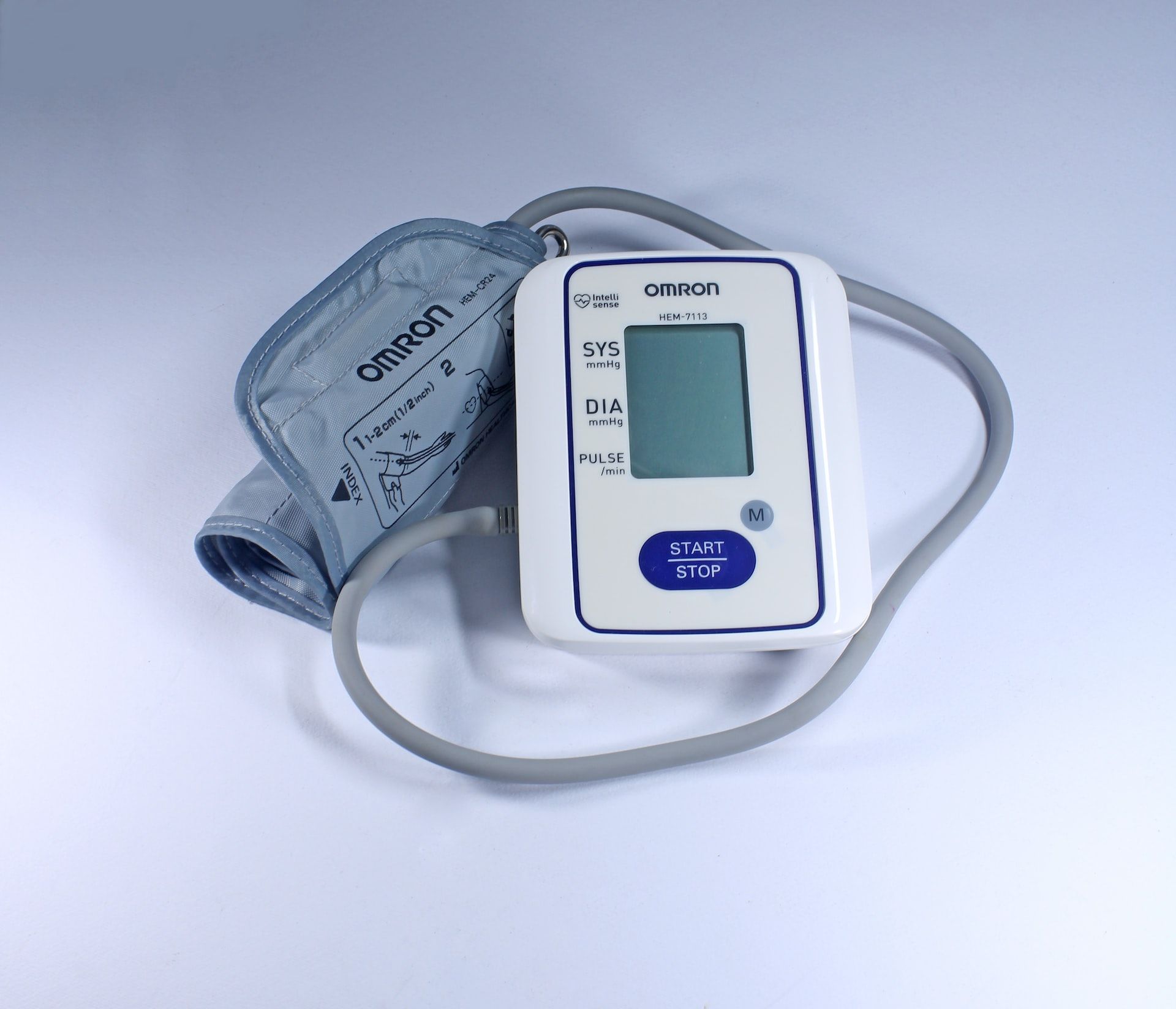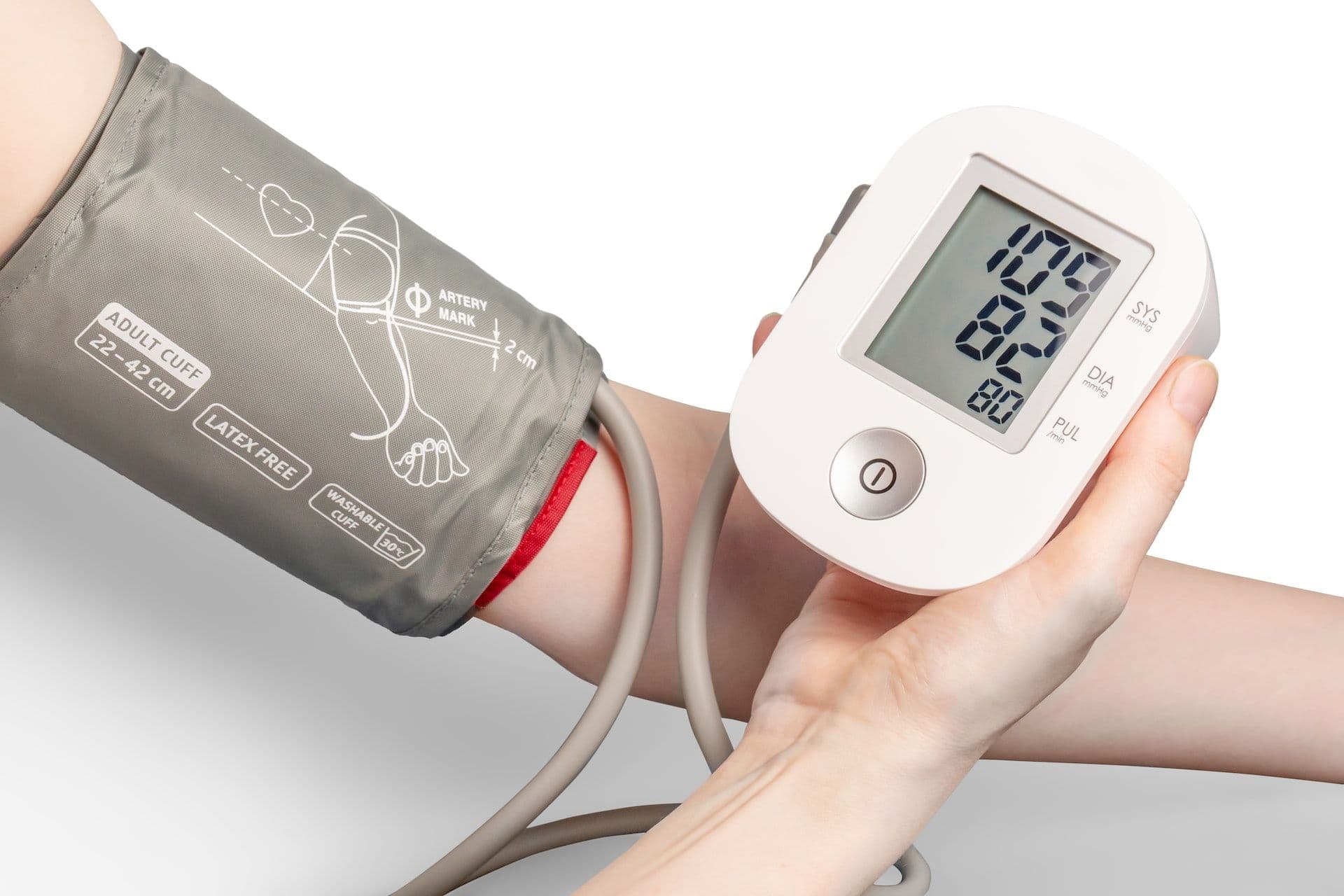There are several ways to measure blood pressure:
- Manual blood pressure measurement: This is done using a blood pressure cuff and a stethoscope. The cuff is placed around the upper arm, and the stethoscope is placed inside the elbow. The cuff is inflated to stop the flow of blood in the artery temporarily, and the stethoscope is used to listen for the sound of the blood flowing through the street as the cuff is gradually deflated. The blood pressure is recorded as two numbers: the systolic pressure (the higher number) measures the pressure in the artery when the heart beats, and the diastolic pressure (the lower number) measures the pressure in the street between beats.
- Automatic blood pressure monitor: These devices use an inflatable cuff and a pressure sensor to measure blood pressure automatically. They are easy to use and can give quick and accurate readings.
- Wearable blood pressure monitors: These devices can be worn on the wrist or upper arm and use sensors to measure blood pressure. They are convenient and can be used to track blood pressure over time, but they may not be as accurate as other methods.
It is essential to follow the instructions provided with the device and ensure the device is used correctly to get an accurate reading. It is also crucial to measure blood pressure simultaneously each day, as it can vary throughout the day.
Blood Pressure Machine
Manual blood pressure measurement involves placing a cuff around the upper arm and using a stethoscope to listen for the sound of blood flowing through the artery as the cuff is gradually deflated. The blood pressure is recorded as two numbers: the systolic pressure (the higher number) measures the pressure in the artery when the heart beats, and the diastolic pressure (the lower number) measures the pressure in the street between beats.
Automatic blood pressure monitors use an inflatable cuff and a pressure sensor to measure blood pressure automatically. They are easy to use and can give quick and accurate readings. Wearable blood pressure monitors are devices worn on the wrist or upper arm and use sensors to measure blood pressure. They are convenient and can be used to track blood pressure over time, but they may not be as accurate as other methods.
It is essential to follow the instructions provided with the device and ensure the device is used correctly to get an accurate reading. It is also necessary to measure blood pressure simultaneously each day, as it can vary throughout the day. Blood pressure machines are essential for monitoring and managing blood pressure, which is crucial for maintaining good overall health.

Features
Several features may be included in a blood pressure machine:
- Temporarily Inflatable cuff: This device is placed around the upper arm and inflated to stop blood flow in the artery.
- Pressure sensor: This device measures the pressure in the cuff and displays the reading on a screen or display.
- Stethoscope: Some blood pressure machines include a stethoscope, which is used to listen to the sound of blood flowing through the artery as the cuff is gradually deflated.
- Memory function: Some blood pressure machines have a memory function that allows you to store multiple readings and track changes in blood pressure over time.
- Bluetooth connectivity: Some blood pressure machines can be connected to a smartphone or other device via Bluetooth, allowing you to easily track and share your blood pressure readings with your healthcare provider.
- Reading large display: A large, easy-to-read display can make reading your blood pressure readings easier.
- Automatic inflation: Some blood pressure machines automatically inflate the cuff to the correct pressure, making it easier to get an accurate reading.
- Multiple-user memory: Some blood pressure machines allow multiple users to store their readings, making it easy for families to track their blood pressure.
Importance of Measuring Blood Pressure
There are several reasons why it is essential to measure blood pressure regularly:
- High blood pressure (hypertension) is a significant risk factor for heart attack, stroke, and other serious health problems. Measuring blood pressure regularly can help identify hypertension early, allowing for early treatment and management to reduce the risk of these health problems.
- Regularly measuring blood pressure can fluctuate throughout the day and may be affected by stress, diet, and physical activity. Measuring blood pressure regularly can help identify patterns and changes that may indicate an underlying health problem or the need for lifestyle changes.
- Some medications used to treat high blood pressure can cause side effects, and monitoring blood pressure can help ensure that the drug is adequate and appropriate.
- Blood pressure machines are convenient and easy to use, and many models are portable, allowing you to measure your blood pressure anywhere.
Regularly measuring blood pressure is essential for maintaining good overall health and identifying and managing health problems early.




















